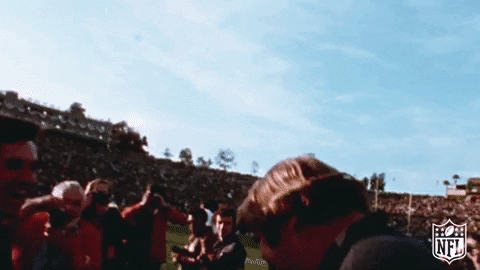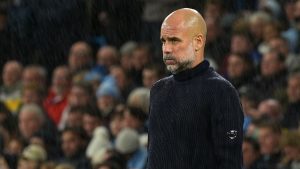On John Madden’s 84th birthday, we visit the history of the Madden video games and the Madden curse


Today, we celebrate a man who’s done it all in and around the game of football: John Madden, who turns 84 years old.
Upon retiring from coaching in the NFL in 1978, Madden had already established himself as one of the great coaches in NFL history. He won a Super Bowl in 1977 as head coach of the Oakland Raiders and ended his career with an overall record of 112-39-7, playoff games included.
He never experienced a losing season as a head coach, and his overall career winning percentage ranks only second behind Don Shula among coaches all time.
And even after all of those accomplishments, Madden isn’t best known for his career as a coach, or even for his second life as a legendary broadcaster. Instead, he is the name, face, and, for a long time, voice of sports video gaming with the EA Sports-produced Madden NFL video game series — a series that touched millions upon millions of football and gaming fans alike through the years.
The idea of the video game was first presented by EA Sports founder Trip Hawkins in 1984, when he approached Madden with the plan of a sophisticated football simulation. Madden would agree to lend his hand to the game’s creation, seeing it as an opportunity to teach and test plays on the field.
Of course, the game has only become more realistic over the years, as this YouTube video showing the year-to-year evolution of the game clearly illustrates:
That growth was all part of Madden’s plan. In an interview for Madden NFL 2009, he stated that his initial goal was to make the game as close to the real NFL product as possible, knowing that it would take time.
And in turn, as the franchise became more and more realistic, alongside innovations in the presentation, NFL broadcasts wanted to mimic the video game, according to Madden:
“One of my original goals was to make the video game look like television. And then when I was at FOX, David Hill, who was the President of FOX Sports, was talking to a group at FOX in a meeting, and he said, “We want to make the game on television look like the video game,” said Madden. “And that was our goal. That was what we wanted to do. And we were so far away from it, you just [tried to] get close. And we did better than get close.”
The rising popularity of the game meant that it no longer needed to depend on Madden’s name alone to sell, which meant it could focus on the true superstars of both the virtual and real-life gridiron: the players. Each new edition of the game celebrates one of the NFL’s best and brightest, a legacy handed down, in a way, from Madden.
But, as Odell Beckham acknowledged when he appeared on Madden NFL 16, there is that pesky curse:
Appear on the cover of the game, the superstition goes, and you’re in for a bad time. Right?
Well, we have something of a birthday present for Mr. Madden: it would appear the curse has started to wear off. Since Peyton Hillis became the first player ever to be voted as the Madden cover star, most of the game’s featured players have had pretty solid seasons the year they were on the cover.
Don’t believe us? Let’s take a look.
Madden NFL 20:
Patrick Mahomes graced the cover and appeared to fall victim to the curse with a knee injury, but he returned to lead the Chiefs to a Super Bowl victory and Super Bowl MVP honors.
Madden NFL 19:
Antonio Brown didn’t suffer the curse during the 2018-2019 season, as he led the league in receiving touchdowns and still crossed the 100 reception mark and 1,200 receiving yard mark.
He did, however, appear in only one game this past season after being traded from Pittsburgh to Oakland and then released by the Patriots.
Madden NFL 18:
There was no stopping Brady during the 2017 season, as he earned his third NFL MVP award and led the Patriots to their eighth Super Bowl appearance under his guidance.
Madden NFL 17:
Rob Gronkowski was named the cover athlete of Madden and proceeded to have the worst season of his career in 2017, playing in only eight games and recording a career-low 540 receiving yards with only three touchdown receptions.
But at least we’ll always have this amazing Gronk commercial in all its 80s hair metal band glory:
Madden NFL 16:
Odell Beckham Jr. became the youngest player to ever cover Madden NFL, but no one could cover him.
He recorded a career-high 1,450 receiving yards and 13 touchdowns after becoming the face of the franchise.
Madden NFL 15:
The curse didn’t strike Richard Sherman, the cover athlete of Madden NFL 15.
He would be selected to his third consecutive All-Pro first team, putting together one of the more impressive highlight reels for a defensive back that you’ll see:
Madden NFL 25:
Adrian Peterson was as untouched by the curse as he was opposing defenders in 2013, as he rushed for 1,266 yards and 10 touchdowns this season.
Madden NFL 13:
Calvin Johnson might be the poster-child of breaking the curse, seeing as how he had the best season of his career in 2012.
Johnson recorded 122 receptions and broke Jerry Rice’s single-season receiving yards record with 1,964 yards.
Madden NFL 12:
This is where things start to get dicey. After a career year in 2010, Peyton Hillis was voted the cover star of Madden NFL 12 and saw his production get sliced in half.
He went from 1,177 rushing yards to 587 yards, while also seeing his touchdowns drop from 11 to three.
Madden NFL 11:
It wasn’t too easy in the Big Easy for Drew Brees when he graced the cover of Madden NFL 11.
Brees would throw a career-high 22 interceptions while the Saints would be eliminated in round one of the NFL playoffs.
Unfortunately, as you go back in the annals, it’s clear why the curse became a thing in the first place. Previous cover athletes such as Ray Lewis, Donovan McNabb, Michael Vick, Vince Young, Troy Polamalu and Shaun Alexander all suffered season-altering injuries the season they graced the cover of the video game; others such as Marshall Faulk and Daunte Culpepper had career worst seasons, while Barry Sanders decided to call it quits all together.
Still, it would appear as if someone somehow exorcised the curse after Madden NFL 12. If so, your sacrifice was not in vain, Peyton Hillis.
And so, we’ll focus on the positives with a video game and a man we all know and love. We hope you had the happiest of happy birthdays, John Madden. You’ve given us so much joy over the years, and we can never thank you enough.
Now, if only players could agree on their Madden ratings …







